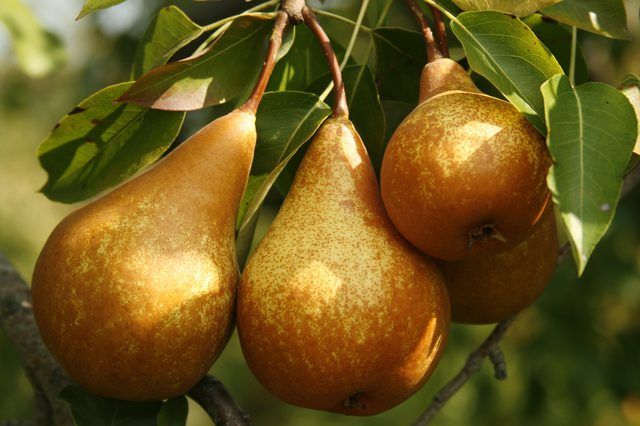Bulbs
Flower Basics
Flower Beds & Specialty Gardens
Flower Garden
Garden Furniture
Garden Gnomes
Garden Seeds
Garden Sheds
Garden Statues
Garden Tools & Supplies
Gardening Basics
Green & Organic
Groundcovers & Vines
Growing Annuals
Growing Basil
Growing Beans
Growing Berries
Growing Blueberries
Growing Cactus
Growing Corn
Growing Cotton
Growing Edibles
Growing Flowers
Growing Garlic
Growing Grapes
Growing Grass
Growing Herbs
Growing Jasmine
Growing Mint
Growing Mushrooms
Orchids
Growing Peanuts
Growing Perennials
Growing Plants
Growing Rosemary
Growing Roses
Growing Strawberries
Growing Sunflowers
Growing Thyme
Growing Tomatoes
Growing Tulips
Growing Vegetables
Herb Basics
Herb Garden
Indoor Growing
Landscaping Basics
Landscaping Patios
Landscaping Plants
Landscaping Shrubs
Landscaping Trees
Landscaping Walks & Pathways
Lawn Basics
Lawn Maintenance
Lawn Mowers
Lawn Ornaments
Lawn Planting
Lawn Tools
Outdoor Growing
Overall Landscape Planning
Pests, Weeds & Problems
Plant Basics
Rock Garden
Rose Garden
Shrubs
Soil
Specialty Gardens
Trees
Vegetable Garden
Yard Maintenance
Pear Trees for Cool Climates
Growing pear trees in a cool climate often proves challenging, but choosing pear trees adapted to cool temperatures helps.

Pear trees (Pyrus spp.) need a specific mixture of cold and warmth to bear and ripen fruit, making them a challenge to grow in cool climates. In those locations, choosing cold-adapted pear tree varieties means the difference between growing trees that will survive and growing ones that will truly thrive.
Climate and Hardiness
Pear trees are hardy in U.S. Department of Agriculture plant hardiness zones 4 through 9, although cold-tolerance varies among the species and cultivars. As a general rule, Asian pear trees (Pyrus pyrifolia) are less hardy than European pear trees (Pyrus communis).
When choosing a cool-climate pear tree, look for a late-blooming, frost-tolerant variety with early-ripening fruit. Late blooming helps decrease the likelihood the tree will lose blossoms to a frost, and early ripening means its fruit will mature before the first autumn frost.
Tip
All pear trees need a chilling period, which is a span of time below 45 degrees Fahrenheit, to bear fruit. Many cold-adapted pears need 800 to 1,000 chilling hours, but some need far fewer hours.
European Pears
European pear trees provide the greatest number of options for gardeners in cool climates. They are hardier than Asian pears, mature faster and produce greater yields.
‘Bartlett’ (Pyrus communis ‘Bartlett’) is perhaps the most common and popular pear variety grown in its hardiness range -- USDA zones 5 through 8. It blooms early in the growing season, producing fragrant white blossoms that mature into spicy, firm-fleshed fruit in late summer.
One of the most winter-hardy European pears is ‘Flemish Beauty’ (Pyrus communis ‘Flemish Beauty’), originally called 'Fondante de Boise.' It is an heirloom variety noted for red-blushed, aromatic fruit. This cultivar is hardy in USDA zones 4 through 7, where it blooms in mid-spring and produces mature fruit by mid-autumn.
A 19th-century heirloom variety, ‘Clapp’s Favorite’ (Pyrus communis ‘Clapp’s Favorite’) has bright-yellow fruit that develops a "red cheek" as it matures. It is one of the earliest bearing pears, producing mature fruit by late summer within its hardiness range, USDA zones 5 through 7.
Tip
European pear trees rarely self-pollinate. So plant two or more compatible varieties to ensure a sufficient fruit yield.
Asian Pears
Even the most cold-tolerant Asian pear trees are not suitable for growing in cool climates with long, harsh winters. Some varieties perform well in cool areas with mild winters, such as marine climates of the U.S. Pacific Northwest. High humidity there, however, may encourage bacterial and fungal infections to develop in the trees.
The ‘20th Century’ Asian pear (Pyrus pyrifolia ‘20th Century’) is hardy in USDA zones 5 through 10, where the tree needs 300 to 400 chill hours each year. Its flowers appear early then mature into golden-brown fruit in the middle of the pear-growing season. ‘20th Century’ pear tree self-pollinates but produces more fruit when cross-pollinated by a variety such as ‘Bartlett.’
Another suitable Asian pear choice for cool climates is ‘Hosui’ (Pyrus pyrifolia ‘Hosui’), a blight-resistant variety with tangy, golden-yellow fruit. It is hardy in USDA zones 5 through 9, where its fruit ripens early in the pear-growing season.
‘Kikusui’ Asian pear (Pyrus pyrifolia ‘Kikusui’) blooms in mid-season after hard frosts have passed. It is hardy in USDA zones 5 through 9, where its fruit matures in late summer. Although partially self-fruitful, ‘Kikusui’ yields more fruit when cross-pollinated by a cultivar such as ‘20th Century.’
Tip
Some Asian pear trees are partly self-fertile, but planting multiple pear varieties or a tree with multiple cultivars grafted onto the same rootstock helps guarantee a hefty fruit yield through cross-pollination.
Growing Tips
Pear trees benefit from a little extra care and attention when grown in a cool climate, although their needs can be lessened by planting them under favorable conditions.
Plant pear trees on a slight slope so cold air will flow downward and away from the them. Position the trees near the top of the slope rather than at the bottom where cold air pools.
Grow each pear tree as an espalier against a south-facing wall. To espalier, or train a tree to grow flat against a structure, exposes more of the tree's branches to radiant heat, which helps hasten fruit ripening, especially when the wall has a non-shaded southern exposure.
Tip
Whenever possible, choose fire blight-resistant pear cultivars to help safeguard the trees' health and longevity.